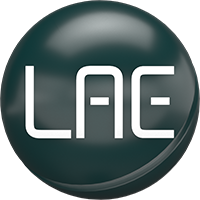In this video, you’ll learn all about Dynamic EQ and a few ways to use it in your mixes.
This video is brought to you by by aixDSP.
Version 2 of aixDSP DynamicEQ is featured in this tutorial.
What is a Dynamic EQ vs a Static EQ?
When using a a Static EQ, the plugin is always applying a cut or boost to the signal.
A Dynamic EQ has all the features of a Static EQ with an added dynamic section that reacts to the incoming signal.
With Dynamic EQ you can set a threshold and ratio to sculpt your cut just like a compressor.
In the first Example, the rhythm guitar sound a bit boomy. This becomes noticeable when a melody with some overlapping frequencies is introduced.
One way to fix this would be to cut the offending frequency area on the rhythm guitar. This would allow the lead to poke thru, but the static cut would also thin out the guitar tone.
I like the tone, so I don’t wanna scoop out a bunch of low mids and ruin it.
If you’re careful, you should be able to dip out a few dB of the low mids, but only when they really start to get boomy. So now the chords won’t get in the way of the lead part.
You also have full control over the compression envelope with knobs for Attack, Hold, and Release.
Dynamic EQ allows you to have any combination Static and dynamic bands, along side dynamic cuts to shape your tone with more control.
This plugin has a great visual which helps when doing tutorials,
but remember to use your ears, it doesn’t matter what any of this looks like.
To Access the Dynamic Section of the EQ, You can click the toggle (I/O) to engage the dynamics portion of the plugin.
by default the ratio is set to 1:1 so you’d need to increase that to hear any effect.
I’ve found 1.5 or 2:1 is a good place to start for a gentle compression.
Next, Lower the threshold to grab the peaks.
Dynamic EQ is frequency specific compression. Similar to DeSsing or Multiband Compression. Dynamic EQ suggests that you are not intending to compress the entire signal, but to surgically remove a few problem frequency areas. Dynamic EQ presents an alternative to manually automating the movement of each curve.
DynamicEQ isn’t limited to compression, you can also use the expansion mode to add a dynamic boost.
In this next guitar example, a few of the chord stabs sound a bit bright.
Let’s start with a dynamic cut @ ~2k (only reacting to the bright stabs)
Then, dynamic boost ~700Hz expansion to boost a frequency area
This contrary motion simulates an EQ Yin Yang Effect to make the chord stabs appear warmer.
Another great use for Dynamic is for Vocal DeSsing. This plugin enables you to remove harsh sibilance, plosives, and consonants in a vocal with compromising to vocals natural tone.
First, Loop a section when some S sounds, or pesky plosives.
For sibilance, check in the upper present range like 5-8 k
or much lower, often the ‘th’ sound can be an issue around 150Hz.
Grab a band, and listen in on a specific sibilant frequency area, then adjust the threshold to cut out a few dB of any shrill s sound’s.
You’ll want a narrow Q to only effect the sibilance.
Furthermore, don’t remove what doesn’t exist.
Don’t cut out a ton of high end because you’re chasing an extra smooth vocal.
Wide cuts in the upper mids will leave your vocals without any intelligibility.
After spending some time with this plugin, I do enjoy the interface.
It took me a second to figure out how to find the expansion mode. (it’s tucked underneath the dynamic toggle switch, labeled compression by default)
aixDSP’s DynamicEQ has been very easy to use, and the controls make it more in-depth than my usual EQ with dynamic capabilities.
►You can Download aixDSP Dynamic EQ here
If you enjoyed this video, make sure to give it a like and Subscribe to Learn Audio Engineering.
Thank you for watching and supporting the channel.
I’ll see you in the next video, happy mixing!




